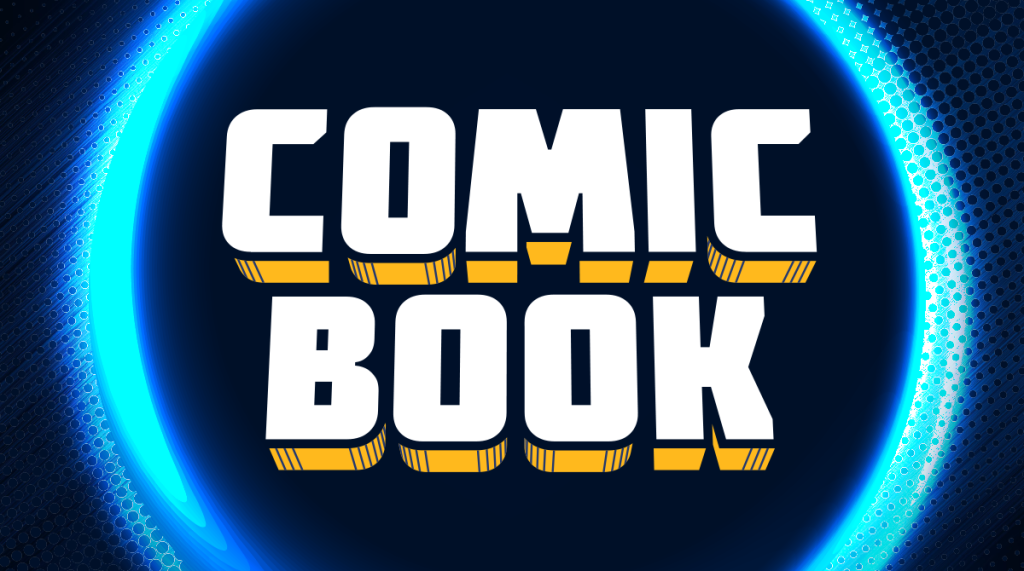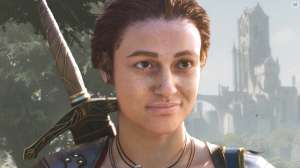The Falcon and The Winter Soldier was originally the first TV series which Marvel Studios was developing to release on Disney+. Following unexpected delays, the 6-episode event series got the second slot, following WandaVision in the release order but also bumping ahead of the Black Widow movie. While head writer Malcolm Spellman (who is also writing the upcoming Captain America 4) tells ComicBook.com there was a bit of a learning curve for the studio in telling a longer form story, director of photography P.J. Dillon did not feel the effects of working on a TV show versus a movie. However, Dillon did not get to see production through to the end as following the production’s temporary halt during the pandemic in 2020, Dillon was unable to return to Atlanta for the rest of production.
Videos by ComicBook.com
“WandaVision was shooting at the same time. So we were the first two shows,” Dillon explained to ComicBook.com. “I imagine there was a learning curve but the approach that was taken was rather than treat it as a conventional TV show, which would be to shoot it in blocks and multiple directors, multiple DPs. The decision was made early on to have one director, one DP and basically treat it as a five or six hour feature film.”
Right out of the gate, Dillon’s creativity was on display for The Falcon and The Winter Soldier. Anthony Mackie’s Sam Wilson was shown pulling off some in-flight action like never before in the Marvel Cinematic Universe, which was a combination of visual and practical effects. “That was a mixture of real skydivers,” Dillon said. “And what we did is we had skydivers with black magic cameras strapped to their chest and helmets and GoPros on the wing suits. So there was a couple of days, which I didn’t actually shoot that specific area unit, but Kari and I and the VFX team came up the concept of how that would work. So we had, I can’t remember, three or four days or maybe a week where they shot actual real aerial stuff. And then all the stuff with Anthony was shot against blue screen or green screen in Atlanta.”
Dillon’s interesting insights about The Falcon and The Winter Soldier, which now has all six episodes available on Disney+, can be read in their entirety in the interview below!
Bucky & Sam

ComicBook.com: I’d like to hear about some of your choices from the beginning! Specifically, I remember in the first episode, the shots of Bucky in therapy were very tight, but also off-kilt. I’m wondering if you could speak to that what you were trying to create there and if there are other styles for moments or characters elsewhere.
P.J. Dillon: Yeah. That specific sequence Kari and I would have thought about it a bit in advance and tried to do something. We wanted to try and shoot something that conveyed how unsettled he felt. He felt insane. And to try and use as a visual language that conveyed that. So we chose unusual angles, we chose to try to really get in very tight, camera quite closely after a wide lens, all of those techniques.
I did see some stuff on Twitter and places where people really responded to it. They hadn’t really seen it before which surprised me a little because it didn’t seem that strange or unusual to me. But I guess generally [director Kari Skogland] and I, we’ve worked together before… We didn’t treat these characters differently than we would any other characters in any other drama because they happened to be in the Marvel show. We just tried to work with the story and what the emotional story was and develop a strategy based on that.
CB: The in-flight action sequences for Sam… From on a level of green-screen to Tom Cruise, how were those shot?
PD: So that was a mixture of real skydivers. And what we did is we had skydivers with black magic cameras strapped to their chest and helmets and GoPros on the wing suits. So there was a couple of days, which I didn’t actually shoot that specific area unit, but Kari and I and the VFX team came up the concept of how that would work. So we had, I can’t remember, three or four days or maybe a week where they shot actual real aerial stuff. And then all the stuff with Anthony was shot against blue screen or green screen in Atlanta.
CB: Wow. Very cool to see how it came together.
PD: It came together really well. I’m very pleased with that. We had shot the fight sequence stuff first and then tried to tie how we shot Anthony into that to try and make it seamless as possible.
Bringing it to Life

CB: I do like how you guys went above and beyond for one shot where Daniel Brühl’s Zemo steps on the super soldier serum viles. He smashes it and we see it through a clear floor. I’d love to hear about creating that shot.
PD: That one I didn’t actually do. Because I shot the majority of the show obviously, but there were second units and there were additional scenes and additional photography. And so that one I actually didn’t do. So I can’t speak for that one.
CB: Was there any style or anything that you looked at from previous Marvel films that involve these characters and their stories that Kari Skogland communicated that she wanted to emulate that or you thought could be cool to incorporate?
PD: Yeah, no, we did for sure. We looked at all of the work that had gone before and try to respect that and honor that. And guess the main thing was that the Avengers movies and the Captain America movies, widescreen shot on anamorphic lenses and we took the choice early on that we would do that. We made the decision early on that we would do that. Just to try to continue that style. So that was the main thing. But then sort of beyond that, we decided that we were doing something new and we had to embrace it. We had to take ownership of it and run with it. And so while being very conscious of this stuff that came before, we also were aware we had to put our own imprint on it.
The MCU

CB: Speaking of previous MCU titles, we do get a very brief scene in Wakanda. Did you feel the need to do anything different to convey such an iconic location in any specific way?
PD: No. In that specific situation, we did the very tight work and then the wider work was actually VFX and there’s a whole legacy there because those guys are working on the movies and they understand the history and the visual history and all of that stuff. So you’re in very good hands so we shoot the tight work and then they actually create the world around it.
CB: Is it a similar process for bringing Madripoor to life, which is probably the most vibrant looking location of the series?
PD: So with that, I mean, everyone would have been very conscious of that this was the first time that Madripoor would be seen on screen. So a lot of the care went into getting that right. But really the concept for it was mostly created by Ray Chan, the production designer, working with Kevin. So they would have gone back and forth quite a lot with concept art and then it would reach a point where it got to myself and Kari and it was like, “This is the concept for Madripoor.” And then my job at that point is trying to execute that. And of course you bring your own things to it and you have suggestions and yeah. But in terms of the concept, as a DP, that was pretty much handed to me. And then it was like, “This is what we envisage. Go and execute it.”
TV vs. Movies

CB: Do you think there was any kind of changes by comparison to, if this were a movie versus one of the first Marvel TV shows? Did they have any learning curve in doing TV for the first time that you noticed?
PD: No. I mean, certainly it was the first… WandaVision was shooting at the same time. So we were the first two shows. I imagine there was a learning curve but the approach that was taken was rather than treat it as a conventional TV show, which would be to shoot it in blocks and multiple directors, multiple DPs. The decision was made early on to have one director, one DP and basically treat it as a five or six hour feature film. Which has its challenges but that was the approach that was taken. And I think that it turned out okay. But I’m sure there were things learned from a production point of view. But from our point of view, we just treated this as a single block of work. We didn’t consciously think, “This a TV show. This is a movie.” We just saw the amount of work that had to be done and went-
CB: Both Falcon and the Winter Soldier and Wandavision went through these temporary shutdowns after getting so much momentum in production. What was it like to get back to work after the shutdown and did anything change for you?
PD: There’s a big difference in that I didn’t get back. So when it shutdown in March, I went back to Europe and then for all of the reasons that you can imagine at that time, I wasn’t actually able to make it back. So I didn’t get to shoot the second part but I think that the bulk of the show would be shot by the time we finished the March which was a big disappointment for me that I wasn’t able to make it but global pandemic, what are you going to do?
Marvelous Work

CB: I’ve heard so much about the improv and the fun people were having on set. Were there any specific moments that didn’t make the cut from these episodes we’ve seen so far that you did work on that got left on the cutting room floor that were fun story to share?
PD: I’m sure there were lots. I can’t think of anything specific right now, but it was wonderful to see Anthony and Sebastian really embrace that. And Kari encouraged it. So we had great scripts but there was always the room to come in and try and riff on it and expand it and work with it. And it was a really good environment in that way. It was a really good environment.
CB: Are you a fan of other Marvel characters? Are there other characters in the Marvel catalog you think would be fun to film because of their costume, their world, or anything in between?
PD: Not so much, but I really like the Thor stuff, I really enjoy that. So, yeah. I like a lot of the stuff, the Spider-Man stuff is great and yeah, but there’s loads that I really like.
CB: Any plans to reunite with the Marvel family for more work yet?
PD: No. I mean, look, I’d happily come and work for them and they’re great people to work for, but there’s nothing lined up at the moment.








